Background: In shortening the clavicles in shoulder reduction surgery there are two factors to consider. Howe much bone length can be removed? How much fixation hardware is needed to support it for uncomplicated healing? Since all patients do not have the same clavicle lengths some adjustments have to be made in the length not bone removal for each patient. When it comes to plating the reduced bone segments the fixation principles used remain the same regardless of the amount of bone removed.
The taller the patient the longer the clavicle is, just like arm length would be. Thus to achieve a similar reduction result as shorter patients the amount of bone removed would have to be a but longer. In my experience I adjust the removed bone lengths per side as follows; short height patient (2.25cm), medium height patient (2.5cm), and tall patient. (2.75cm) Due to the curves in the shape of the clavicle bone and the use of straight fixation plates, there are limits as to how much of the clavicle length can be removed and safely put back together.
When it comes to clavicle reduction osteotomy fixation the principles are the same regardless of the length of bone removed. A superior plate is the fundamental fixation needed to resist arm abduction. The thickest strongest plate is used which is 3.5mm thick. (the thickest made for clavicle fractures) Screws through the plate must go through both cortical bone surface to prevent pull back and subsequent plate loosening. These screws lengths range from 14mm to 20mms depending upon the thickness of the bone.
Case Study: This female had shoulder dysphoria with a bideltoid distance of 52cms and a clavicle bone lengtb of 17cms. She was 5’ 11” tall.
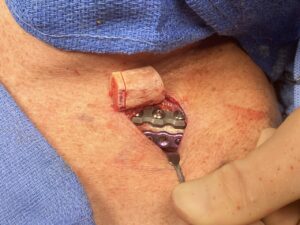
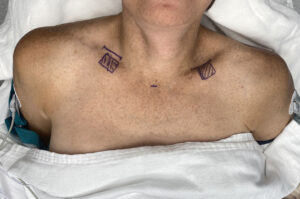
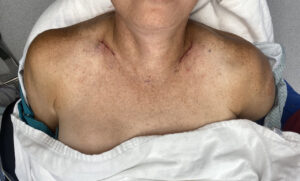
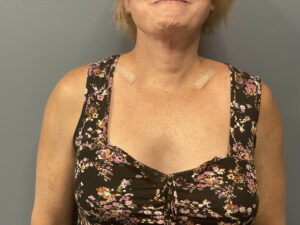

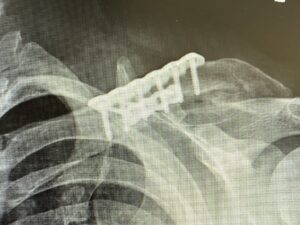
Case Highlights:
1) Tall shoulder reduction patients will have larger and longer clavicles.
2) In large clavicle bone reductions adequate screw lengths are needed to ensure bicortical engagement.
3) Longer larger clavicles may allow for some increase in the amount of bone removed.
Dr. Barry Eppley
World-Renowned Plastic Surgeon




